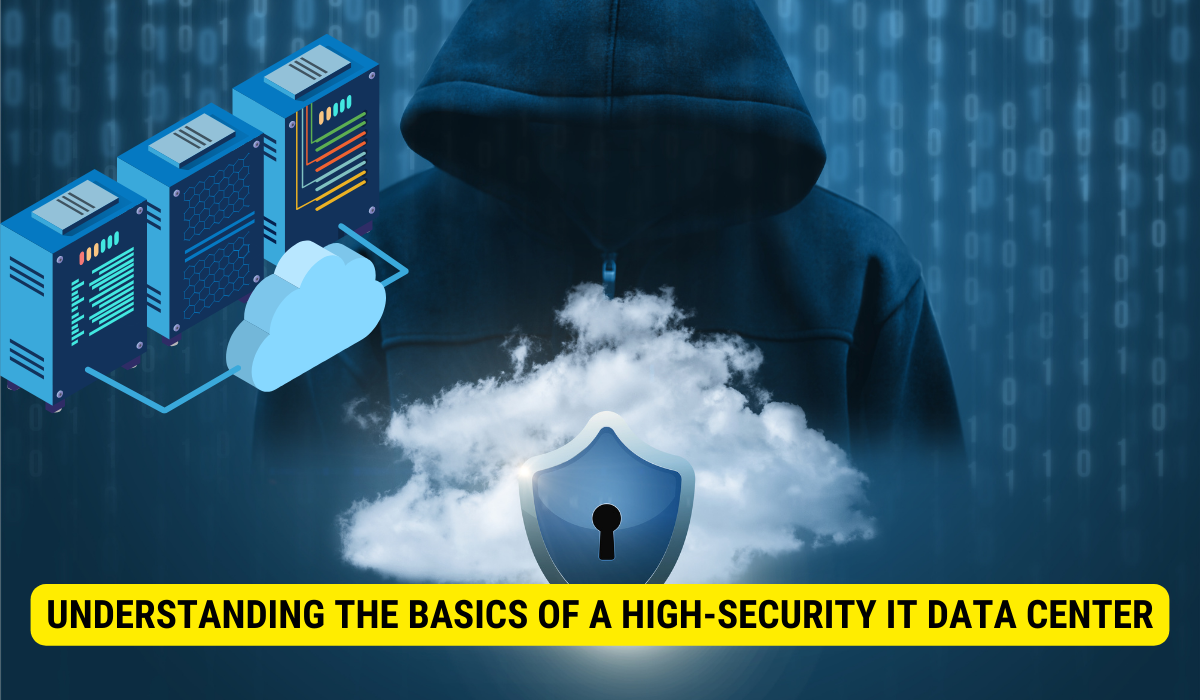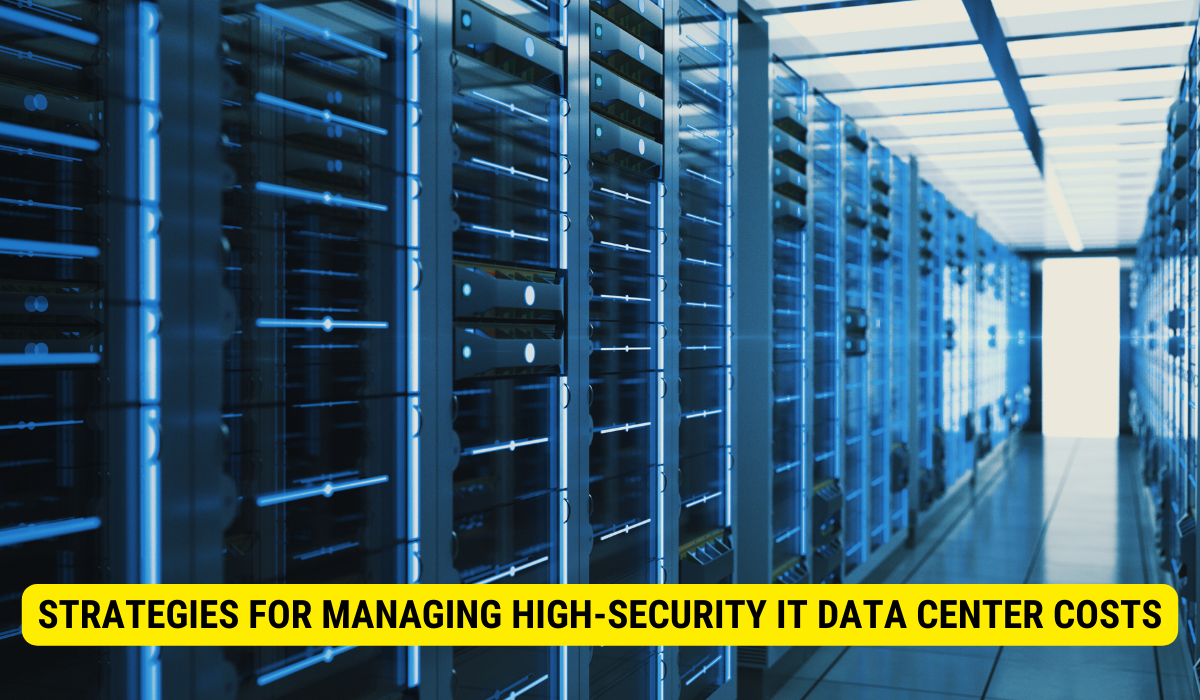High-security IT data centers, designed to safeguard sensitive information from potential cyber threats, involve significant costs due to advanced physical and cybersecurity measures. The overall expenditure comprises initial setup expenses and ongoing maintenance and update costs.
High-security IT data centers are critical in safeguarding sensitive information and against potential cyber threats. However, the implementation of robust security measures comes at a cost. Together, we will delve into the various factors contributing to the expenses associated with high-security IT data centers and strategies for effectively managing these costs.
Understanding the Basics of a High-Security IT Data Center
Before we explore the costs involved, it is important to understand the fundamental elements of a high-security IT data center. A high-security data center combines physical security measures with advanced cybersecurity protocols to create a comprehensive defense system against potential breaches.
A high-security IT data center is designed to protect and secure sensitive information and critical infrastructure. A fortress-like environment houses servers, storage devices, and networking equipment, which are crucial for operating an organization’s IT infrastructure.
High security in IT data centers is of utmost importance due to the ever-increasing cyber threats organizations face today. The potential consequences of a data breach can be catastrophic, ranging from financial losses to reputational damage. Organizations can mitigate these risks and protect their valuable data by investing in high-security measures.
The Importance of High Security in IT Data Centers

With the rise of cybercrime and the increasing sophistication of hackers, organizations must prioritize the security of their IT data centers. These facilities store and process vast amounts of sensitive information, including customer data, financial records, and intellectual property. A breach in security could lead to severe consequences, such as financial theft, identity theft, and even the compromise of national security.
High-security measures in IT data centers are designed to prevent unauthorized access, detect and respond to potential threats, and ensure the continuity of operations. By implementing robust security protocols, organizations can safeguard their data and maintain the trust of their stakeholders.
Key Components of a High-Security IT Data Center
A high-security IT data center comprises several key components that work in tandem to create a secure environment. These components are carefully designed and integrated to provide multiple layers of protection against physical and cyber threats.
- Access: Control Systems: Utilizing biometric authentication and proximity cards to restrict access to authorized personnel only. Access control systems ensure that only individuals with the proper credentials can enter the data center, minimizing the risk of unauthorized entry.
- Surveillance Systems: Employing advanced video surveillance systems to monitor the premises and deter potential intruders. Surveillance cameras are strategically placed throughout the data center, capturing and recording suspicious activities. These systems not only act as a deterrent but also provide valuable evidence in the event of a security incident.
- Fire Suppression Systems: Installing automatic fire detection and suppression systems to protect against fire risk. Data centers house significant electronic equipment that generates heat, making them susceptible to fires. Fire suppression systems, such as sprinklers and specialized gas-based suppression systems, are designed to detect and extinguish fires quickly, minimizing damage and downtime.
- Redundant Power Supply: Implementing backup power sources to ensure uninterrupted operation during power outages. Data centers require a constant and reliable power supply to keep critical systems running. Redundant power supplies, including uninterruptible (UPS) and backup generators, provide a failsafe mechanism to keep the data center operational even during a power failure.
- Physical Barriers: Constructing reinforced walls, gates, and fences to prevent unauthorized access. Physical barriers serve as the first line of defense, deterring potential intruders from attempting to breach the data center’s perimeter. These barriers are designed to withstand physical attacks. They often have intrusion detection systems to alert security personnel of any breaches.
- Network Security: Implementing robust cybersecurity measures to protect against cyber threats. Network security includes firewalls, intrusion detection and prevention systems, encryption protocols, and regular vulnerability assessments. These measures ensure that data traveling to and from the data center is secure and protected from unauthorized access or manipulation.
By integrating these key components, a high-security IT data center can provide a secure environment for storing, processing, and transmitting sensitive information. These measures protect the organization’s assets and contribute to the overall resilience and reliability of the IT infrastructure.
Factors Influencing the Cost of High-Security IT Data Centers
Now that we have established the importance and components of high-security IT data centers let us examine the factors that influence their cost.
The Role of Physical Security Measures
Physical security measures, such as access control systems and surveillance systems, significantly contribute to the overall cost of a high-security IT data center. The installation and maintenance of these systems require substantial investments. However, their effectiveness in deterring potential breaches justifies their costs.
Access control systems ensure that only authorized personnel can enter the data center. These systems often include biometric authentication methods, such as fingerprint or iris scanners, which add an extra layer of security. The installation of these systems involves not only the cost of the hardware but also the expertise of professionals who can properly set up and configure them.
On the other hand, surveillance systems are responsible for monitoring the data center’s physical environment. They include CCTV cameras strategically placed throughout the facility, enabling real-time monitoring and recording of suspicious activities. The cost of these systems includes the cameras and the necessary infrastructure, such as storage devices and network equipment, to support the surveillance operations.
The Impact of Advanced Cybersecurity Protocols
Implementing advanced cybersecurity protocols, such as intrusion detection systems and encryption technologies, is paramount in maintaining data integrity. However, these measures often require significant financial resources to implement and maintain. Nevertheless, the potential cost of a data breach outweighs the expenses associated with robust cybersecurity protocols.
Intrusion detection systems (IDS) are designed to identify and respond to potential security threats. They monitor network traffic, looking for any suspicious patterns or activities that may indicate an ongoing attack. IDS can be host- or network-based, each with its own set of costs. Host-based IDS requires software installations on individual servers, while network-based IDS involves the deployment of dedicated hardware appliances.
Encryption technologies are essential for protecting sensitive data from unauthorized access. They ensure that the stolen data remains unreadable and unusable to the attackers even if a breach occurs. The cost of implementing encryption technologies includes the acquisition of encryption software and the necessary hardware upgrades to support the computational requirements of encryption and decryption processes.
Moreover, maintaining advanced cybersecurity protocols requires ongoing investments. Regular updates and patches are necessary to address newly discovered vulnerabilities and emerging threats. Additionally, organizations must allocate resources to train their IT staff to stay up-to-date with the latest security practices and technologies.
Calculating the Cost of High-Security IT Data Centers
When quantifying the costs of high-security IT data centers, it is important to consider both initial setup expenses and ongoing maintenance and update costs.
Initial Setup Costs for High-Security Measures
The initial setup costs primarily include the expenses incurred while implementing the various components of a high-security IT data center, such as access control systems, surveillance systems, and fire suppression systems. These costs can be significant but essential in establishing a robust security infrastructure.
Ongoing Maintenance and Update Expenses
High-security IT data centers require continuous maintenance and regular updates to ensure effectiveness. This ongoing expenditure includes equipment upkeep, software upgrades, and personnel training. By allocating funds for maintenance and updates, organizations can maintain the highest level of security within their data centers.
Cost-Benefit Analysis of High-Security IT Data Centers
While high-security IT data centers involve substantial costs, conducting a cost-benefit analysis helps organizations evaluate the financial justification for these investments.
Evaluating the Financial Risks of Data Breaches
The financial risks associated with data breaches can far exceed the expenses required for implementing high-security measures. By quantifying the potential losses resulting from a breach, organizations gain a clearer understanding of the financial benefits of investing in robust security measures.
The Value of Customer Trust in Data Security
In addition to the monetary losses, data breaches can severely damage an organization’s reputation and erode customer trust. By prioritizing data security, organizations can maintain their customers’ trust and safeguard their long-term financial prospects.
Strategies for Managing High-Security IT Data Center Costs
Despite the costs involved, there are several strategies organizations can employ to manage high-security IT data center expenses effectively.
Budgeting for High-Security IT Data Center Operations
By carefully allocating budgets to cover the costs of high-security measures, organizations can ensure that their data centers remain adequately protected. Transparent and comprehensive budgeting allows for better financial planning and minimizes the risk of unexpected expenses.
Cost-Effective Measures for Enhancing Data Center Security
Organizations can identify cost-effective measures to enhance data center security without compromising on the effectiveness of their defense systems. This may include leveraging open-source security software or partnering with managed security service providers for cost-efficient solutions.
Key Takeaways
- High-security IT data centers combine physical and cybersecurity measures to offer comprehensive protection against potential breaches.
- Physical measures like access controls, surveillance, and barriers ensure unauthorized personnel can’t access critical infrastructure.
- Advanced cybersecurity protocols maintain data integrity and confidentiality, including intrusion detection and encryption.
- While implementing robust security measures has significant costs, potential financial and reputational risks of breaches validate the investment.
- Effective cost-management strategies can help organizations maintain security standards while managing financial constraints.
FAQs
What are high-security IT data centers?
They are specialized facilities designed to securely house servers and other IT equipment, ensuring robust protection against cyber threats and unauthorized access.
Why are high-security IT data centers more expensive?
The added costs arise from implementing advanced physical security measures, complex cybersecurity protocols, regular maintenance, and periodic updates to counter emerging threats.
How do high-security IT data centers protect against potential breaches?
They employ physical security measures like access control, surveillance, and cyber protections, including intrusion detection systems and encryption technologies.
Is the investment in a high-security IT data center worth it?
Considering the potential financial and reputational risks associated with data breaches, investing in high-security measures offers long-term benefits, outweighing the initial costs.
Can organizations manage the costs of high-security IT data centers effectively?
Organizations can manage expenses without compromising security through comprehensive budgeting, exploring cost-effective security enhancements, and leveraging managed security service providers.
Conclusion
Investing in high-security IT data centers is paramount in today’s digital landscape fraught with cyber threats. While implementing such advanced measures comes with notable costs, the potential repercussions of data breaches make it a justified expenditure. With strategic planning and cost-effective measures, organizations can maintain robust security without overstraining their budgets.
